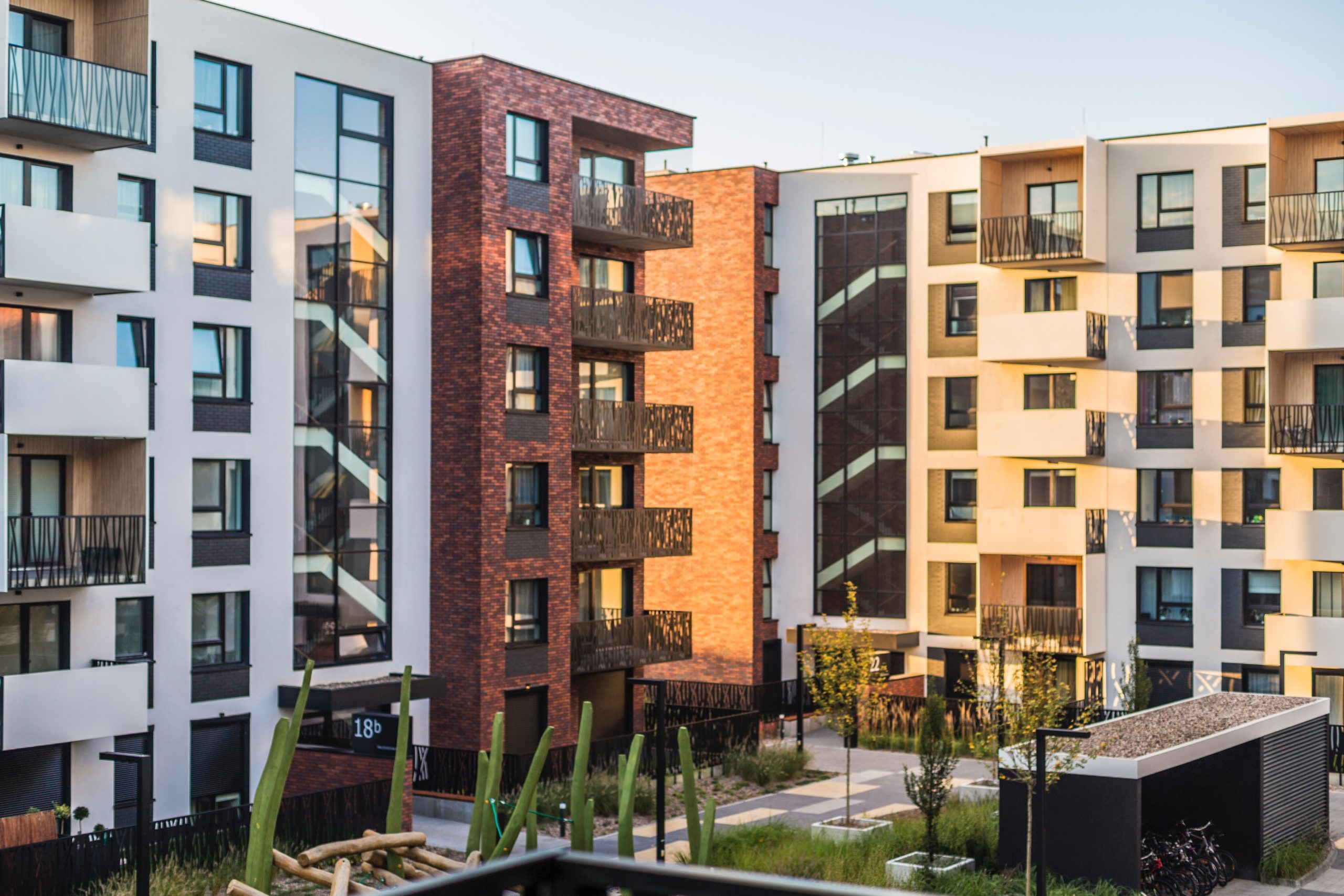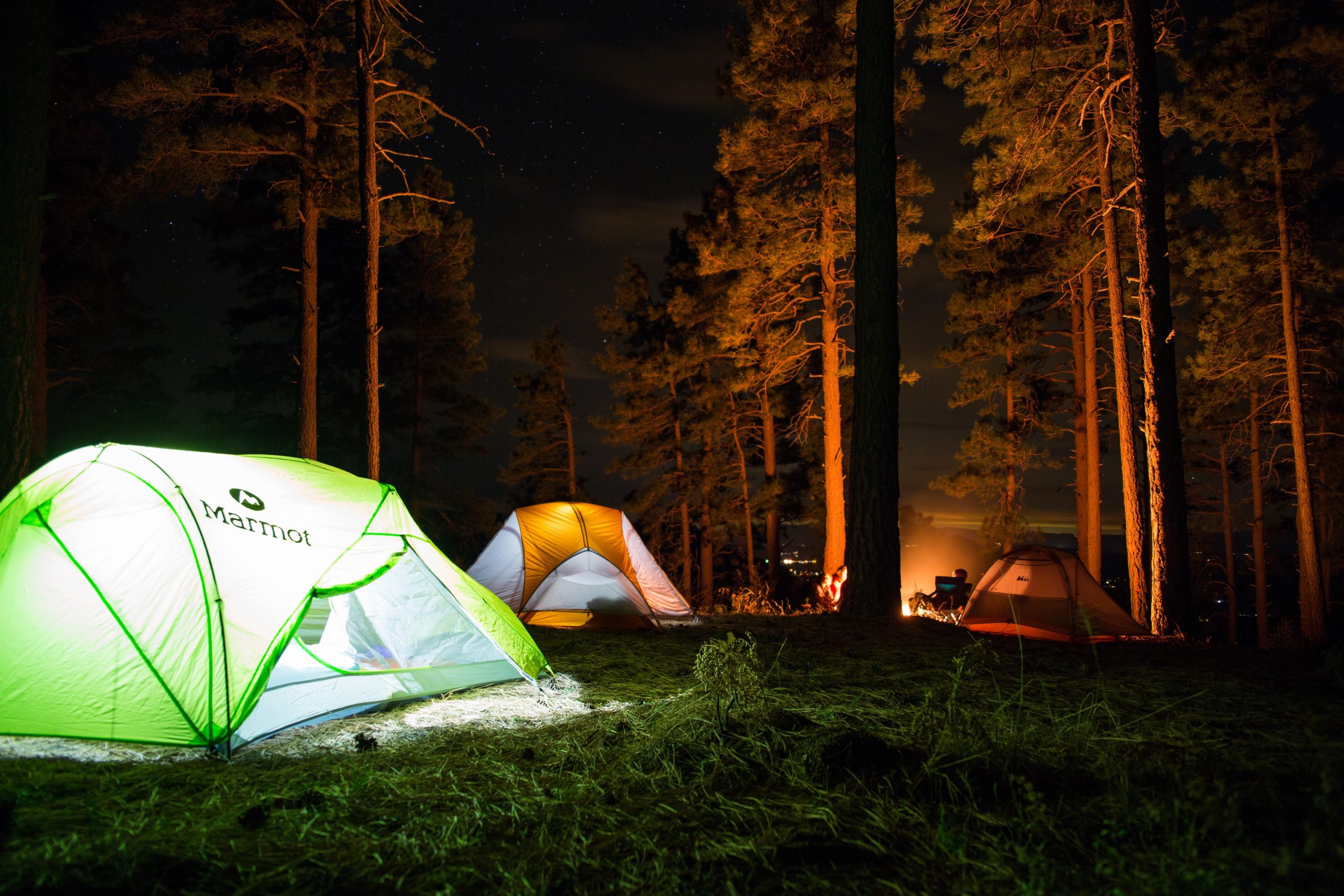Property Types
Property Types
Different Appraisals have different needs. Scroll through the property types for more information.

Church
Appraising churches is something many commercial appraisers shy away from, whereas, we follow them.
As churches attempt to become more involved in the day to day lives of their members, the church and religious facility design is dictating membership type to some degree. Generally speaking, there are three styles of churches: traditional, modern, and evolving facilities. Churches may also be a blend of the styles. When a church is a combination it is often the result that the churches have been built in multiple phases over time, have had financial and/or congregation size constraints, or the churches were converted from another previous use. Another emerging trend is repurposing commercial (secular) buildings into churches.
The traditional (historic) church was originally designed for and acted as both a church and meeting hall or gathering place. Thus, the improvements focused primarily on the sanctuary. These classical churches are generally ornate and not uncommon are high ceilings, custom wood work, stained glass, exquisite masonry, and large steeples and towers. While these features are aesthetically and architecturally appealing, they often have reduced function based on the requirements of today.
These churches typically have a ratio of 30 to 40 square feet of building area per seat. The location, whether it is urban or rural is usually in a higher density, higher visibility, more commercially developed area. The site coverage of these churches ranges, but often times these churches have a FAR (floor area ratio) range of 20% to 80% and face obstacles for expansion and parking.
The modern church began following WWII when a surge in development of single family residential properties spurred church development as well. Influencing modern church development was the Interstate Highway Act and its impact on overall suburban growth, with congregations now accessing churches from greater distances.
The facilities built were plainer in design and more cost effective than the traditional church. As the churches grew, the facilities evolved with the addition of schools/classrooms, administrative offices, kitchens, gymnasiums, and other amenities.
Ultimately, the modern church satisfies four broad needs: worship, education, fellowship, and administration. These churches typically have a ratio of 50 to 75 square feet of building area per seat. The site coverage of these churches range but generally have a significantly lower coverage than the traditional churches as a result of zoning requirements (in some areas) as well as the need for parking and desire of the church to have capabilities for future growth and expansion.
The evolving churches have a family life center style focus. These churches provide more than just weekly services but provide a social and recreation center designed for the needs of families.
One trend for evolving churches is to make the church look less imposing and the desire to the make the interior more user-friendly. Features of these churches include the sanctuary, administration offices, fellowship area and an education area much like the modern church. Additionally though, these churches will try to provide one or more of the following: bookstore, coffee shop, deli/bakery, daycare facility, gymnasium, work-out center, child and adolescent lounges, and audio/visual studios. Chief of the new design elements is the increasing emphasis on technology, with a strong emphasis on visual and audio improvements.
Lastly, a newer trend in church development is the conversion of commercial buildings into churches. Whether there is minimal land available for purchase for development, the cost of the land is beyond the means of the congregation, or a commercial building is simply available and has all the requisite traits for a church, transforming an adaptive re-use structure into a worship center can be a cost-effective way to allow a church to be located in the desired area. It is noted that church conversion best serves congregations that do not require the exterior of the building to look like a traditional church.
Buildings that generally make the best re-use structures include: retail buildings (medium and big box retail stores), movie theaters, skating rinks, car dealerships, industrial buildings, and flex condominium buildings. Advantages to these buildings are they typically have strong locations and adequate parking for a church use. In the case of flex condominium buildings, church use times generally do not conflict with the business hours of the neighboring units.
Beneficial building attributes include: sizable clear column spans, ample open area for the sanctuary, high ceilings, and good roof support if additional HVAC units are required. Also, not uncommon are for these buildings to already have in-place a sprinkler system and the necessary ingress/egress doorways to meet fire codes for church use. In the case for a movie theater conversion to church use, much of the desired acoustics are in place in the existing theaters; also, the concession area converts well into a large narthex area with a café.
Church Features
Churches are built for and designed for a specific church congregation. The features of a church therefore are not generic to the marketplace. The following discussion describes some common features found in churches and design trends affecting the marketability of churches.
A narthex not only serves as a place of entry, augmented in larger buildings by a foyer or vestibule or both, but provides a space for conversation and visiting between members before and after services. This space should be sufficiently large enough to accommodate pedestrian traffic and it should provide access to the sanctuary as well as the other portions of the church. Church architects report an increasing trend for church cafés, coffee bars and social areas close to the worship space. Overall, narthexes have become larger and more welcoming.
A nave is considered the space in which the congregation is seated for service. The main entrance to the nave should be at the rear of the seated congregation to minimize interruption of services to latecomers. Natural lighting is sought however, not so much that it is overly bright making it uncomfortable to the congregation. Lastly, sanctuaries are moving away from the long narrow worship spaces to shorter, wider, and ideally with unimpeded views.
The chancel and choir often are virtually unified and the amount of space required by either or both is a matter of wide variance between types of churches. Some churches have virtually no vocal or instrumental performances as part of ritual while others have a significant focus on vocal and instrumental performance. It would be presumptive of the appraiser to give any value difference for different sized stages and therefore none is.
The baptistery represents a point of difference among various practicing sects. No Baptist Church can function without one; no Methodist or Presbyterian Church needs one. However, if a Methodist or Presbyterian Church were to buy a previous Baptist Church it is unlikely that the baptistery would be removed assuming that it has aesthetic appeal.
For churches with a strong emphasis on welcoming new members, there is also a focus on building child-care and youth activity rooms. The church building becomes not just a container for worship, used on Sundays and little else, but a true community center with meeting rooms, social halls, even gymnasiums. Of prime importance to a fellowship hall is a nearby functional kitchen or warming room, in being able to provide food and refreshments for the various activities held there.
More churches are being built without usable basement spaces. Concerns about mold and ground water damage to equipment have contributed to this trend. The result is that basement area contributes less value relative to above grade space.
As Americans grow ever more mobile, churches need to consider the needs of the families’ cars. While most current building regulations require about one parking space for every three to four people, architects consider this insufficient for churches with a family life center design. These types of churches offer so many ministries and programs; a family of four might have four different programs to attend after services. Each needs to find a way home after the events so increased parking is always a consideration.
Lastly administrative offices are important for mid-sized to larger congregations. The amount of space dedicated to office is proportional to the size of the church, its activities, and its needs for office area. The offices should be near an exit with access to parking.
Church Supply and Demand Forces
Church demand is based on the communities that they serve. In total, the need for facilities has paralleled areas of growth as well as ethnic diversity growth. The ability of congregations and church leadership to organize and raise capital for their church facilities determines their effective purchasing power.
Church supply is based on the number of churches in the market place. More specifically, church supply is based on the number of available churches in the market or available church sites and building costs. Churches are a localized property-type where being accessible to the congregation they serve is of the upmost importance.
Valuation Analysis
Paramount to property valuation is determining highest and best use. After collecting all pertinent data within the market, the appraiser will utilize and analyze the best and most relevant data to arrive at a value conclusion for the subject.
Most commonly, churches are appraised using the sales comparison and cost approach to value. Both approaches to valuation are based on the theory of substitution in that a knowledgeable buyer will not pay more than the cost of acquiring or building an equally desirable/functional property.
The sales comparison approach provides an indication for market participant behavior.
The cost approach is essential for church and institutional property valuation as market participants’ generally associate value with cost. Therefore both approaches are typically relevant to church valuation.
Market data can be extracted to support depreciation as well as the sales adjustments to reach a final indication of value. The subject’s features, layout, design, age, quality, condition, locational attributes, site size, church supply and demand forces, as well as potential alternative uses – all with respect to the market, are all considered within the analysis.
Conclusion
Churches are a special-use property-type with a limited market of buyers. While all churches are unique in design, generally speaking there are three styles of churches which differ in their appeal to various churches and congregations. What a church is and what they do is reflected in the design of the church building. Attributes of churches and trends in the market overall indicate more user-friendly, welcoming, and increasing technological design elements to better enable the church to reach out to the congregation and the community at large.
Property value is predicated upon highest and best use. For churches, the principle of substitution applies to the valuation analysis as the value of a church is the cost to replicate the facility plus underlying site value in contrast to the price of purchasing a comparable facility. Supply and demand elements must be considered as churches are a unique property-type and location is of upmost importance.

Industrial
industrial buildings and increase to distribution warehouses that are better measured in acres than square feet.
We have appraised everything from 5,000 SF to 1,000,000 SF.
Rail spurs are no longer part of typical industrial transportation. However, they are very important for some tenants and do affect value. The same is true for barge ports on the river. These are tough
appraisal questions that require significant levels of skill and experience.

Retail Centers
Other types would include regional shopping malls and then on up to super regional shopping centers.
There are several other types of shopping centers such as lifestyle, power, outlet, etc.
If you plan on building a shopping center, you will want to know how long it will take to lease the property and what the rent rate will be. We can provide market and feasibility studies in addition to appraising the property.
Building a shopping center with multiple tenants can be a pretty risky investment. The risk can be significantly reduced by having a market study and fundamental demand analysis performed by a qualified real estate appraiser. The appraiser collects information about existing retail centers that compete with the proposed shopping center, any shopping centers currently under construction and shopping centers that have been approved by government authority but have not begun construction. This information is
coupled with existing population and growth patterns and analyzed in the market study based on expenditures per square Foot of retail space. These facts let the appraiser determine if the current population can absorb another shopping center or if future growth will allow the absorption in the future.
The super-regional center provides an extensive variety of shopping goods comparable to those found in the central business district of a major metropolitan area, including a wide selection of general merchandise, apparel, and home furnishings, as well as a variety of services and recreational facilities. The principal tenants of a super-regional center include at least three full-line department stores of generally not less than 75,000 square feet each.
REGIONAL CENTER
The regional center provides a variety of goods comparable to those found in a central business district in a small city, including general merchandise, apparel, and home furnishings, as well as a variety of services and perhaps recreational facilities. One or two full-line department stores of generally not less than 50,000 square feet of GBA are the principal tenants in this type of center.
The average total floor space (GBA and all other floor area) of the regional centers in this study is about 535,339 square feet; the median is about 551,034 square feet, with 80 percent of the centers between 811,785 and 298,282 square feet in size.
COMMUNITY CENTER
The community center provides a wide range of goods and services, including apparel and home furnishings, banking, professional services, recreational facilities, and convenience goods. A discount department store and/or supermarket is often the principal tenant in this type of center.
The average total floor space (GBA and all other floor area) of the community centers in this study is about 198,958 square feet; the median is about 181,748 square feet, with 80 percent of the centers between 396,318 and 111,819 square feet in size.
NEIGHBORHOOD CENTER
The neighborhood center provides for the sale of convenience goods such as food, drugs, hardware, and personal services. A supermarket is the principal tenant in this type of center.
The average total floor space (GBA and all other floor area) of the neighborhood centers in this study is about 61,809 square feet. The median is about 59,960 square feet, with 80 percent of the centers between 92,190 and 39,192 square feet in size.
CONVENIENCE CENTER
The convenience center provides for the sale of convenience goods and personal services similar to those of a neighborhood center. Instead of being anchored by a supermarket, a convenience center usually is anchored by personal and convenience services.
The average total floor space (GBA and all other floor area) of the convenience centers in this study is about 18,754 square feet; the median is about 19,762 square feet, with 80 percent of the centers between 28,242 and 10,410 square feet in size.

Hotel, Resorts, Marinas

Self-Storage
We appraise both standard self storage facilities as well as retail or service self storage. Self storage facilities can take many forms.
Institutional grade properties are all fairly consistent, with an on site manager, secure lot, etc. However, many facilities are built by individuals and can include residential housing, office, retail, or service centers.
Regardless of the configuration, we are happy to appraise any self storage facility that you may have.
As the owner of three separate self-storage facilities, I am intimately aware of the dynamics associated with Self Storage.
Dry Ridge Self Storage Dry Ridge KY
Ustore Mini Warehouse Williamstown KY
Country Roads Storage Shelbyville, KY

Apartments
Due to the collapse of the housing market and the recession that followed, Development of new subdivisions and spec houses dropped to nothing.
This new reality caused a major shift from owning a home to renting an apartment. Consequently, apartments are being built at a breakneck speed. This will eventually become overbuilt and vacancy will increase.

Campground & RV Parks
The value conclusion is based on market sales, but the sales are used more to extract an overall capitalization rate than to estimate a unit value.
Appraising campgrounds and mobile home parks is challenging, but we enjoy them.

Vacant Land
Vacant land is considered by many to be the easiest property type to appraise. However, the opposite is true. Vacant land can be used for anything from a campground, power plant, residential subdivision, industrial property, cat grooming or any one of a million other choices.
The highest and best use of the land must be determined by the appraiser before any attempt at valuation can be made.
Therefore, the appraisal of vacant land is actually the most difficult of all the appraisal assignments.
We have appraised countless tracts of land in every conceivable location and will be happy to appraise yours.

Residential
Bring us your residential property to be appraised. American Appraisers does both residentials and commercial properties.